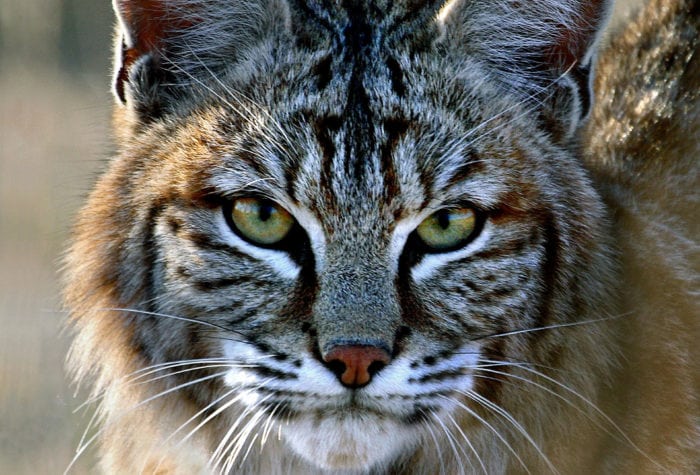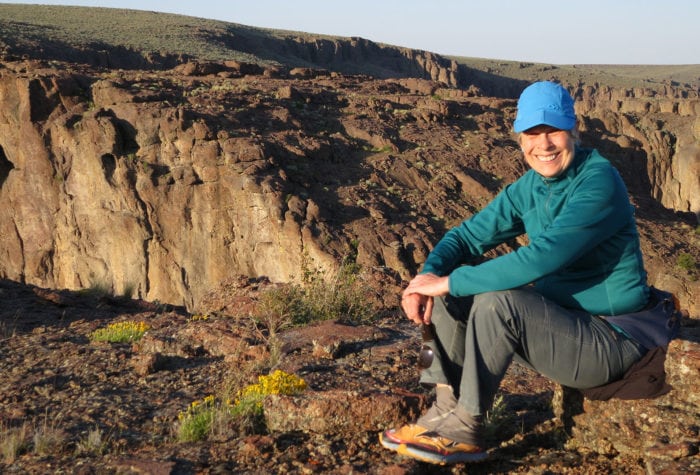Author: Claire Cekander | Published: March 6, 2024 | Category: Look Back
Reflections on the 2024 High Desert Speaker Series
Each year, Oregon Natural Desert Association presents the High Desert Speaker Series: a collection of events designed to share and celebrate the many wonders of Oregon’s high desert.
Our aim for these events is to grow our community of conservation advocates and illustrate the value of coming together to create a thriving future for the lands, waters and wildlife of eastern Oregon. This year, we were grateful to see thousands of people tune in and show up to our mix of virtual and in-person events.
To recognize the end of the 2024 Speaker Series, we offer a look back at the four events we hosted this year.
Dive into the Hive
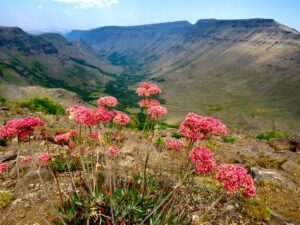
Lincoln Best, presenter and Oregon Bee Atlas’ melittologist (someone who studies bee biodiversity), took us on a virtual journey into the hidden world of high desert bees. Best shared photos of rare endemic species and provided insights into their pollination habits, lifestyles and ecology. He also gave tips on how you can find these tiny but vital creatures.
Desert Tip: When asked by attendees, Lincoln Best suggested the best time of the year to see native bees in the high desert is to follow the wildflower blooms and plan a visit from May to early July.
A Journey Through the Owyhee Canyonlands

ONDA Board Members Natasha Bellis and Elisa Cheng, and Campaign Manager Karly Foster, came together virtually to reflect on their spring rafting trip down the Owyhee River and share their experience absorbing the natural landscapes, rich culture and history, wildlife habitats and many recreation opportunities in this remote and stunning region. Our presenters also shared conservation advocacy initiatives you can support to counter threats to the region and ensure that the Owyhee is protected.
Memorable Quote: “I feel a deep responsibility to this place, when it gave [me] this wonderful gift like the Owyhee did on this short trip. I feel a calling and longing to not only learn more about this landscape, but protect it for all of the gifts that it gave us and has been giving people since time immemorial” – Karly Foster, ONDA’s campaign manager
Cultivating Partnerships: Traditional Ecological Knowledge and Science in Land Stewardship
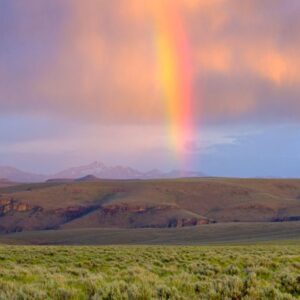
Dr. Cristina Eisenberg, Oregon State University’s Associate Dean for Inclusive Excellence and Director of Tribal Initiatives in Natural Resources, came to Bend and Portland to highlight how land stewardship rooted in indigenous knowledge can be used to create sustainable natural systems. We left this event with a deeper understanding of ecocultural restoration and how this practice sustains biodiversity and re-establishes a healthy relationship between nature and culture.
Educational Takeaway: Dr. Eisenberg defined “ecocultural restoration” as the process of restoring key historic pre-contact, pre-industrial ecosystem structures, processes, and functions, and the Indigenous cultural practices that helped shape ecosystems.
Tracing Geological History Through Rocks and Minerals in Oregon’s Desert
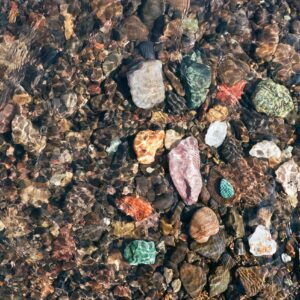
Alison Jean Cole, author, rock collector and lapidary artist, took us back in time to uncover the geological history of eastern Oregon and the unique rocks that remain in this region today through a visually stunning presentation in Bend and Portland. Cole connected us to the high desert through petrified wood, jasper, sunstone, and more while reminding us that rock collecting can be balanced with conservation.
Memorable Quote: Alison Jean Cole shared poems, facts and photos to highlight the rock and mineral treasures of the high desert. She concluded her presentation with the following quote: “Rocks are reminders that history, wonder, beauty and surprise are everywhere, all around us, all the time.” – Nora Bauman
Thanks to the presenters who shared their unique and deep knowledge about the desert and to you, our conservation community, for attending and using this inspiration to advocate for the conservation of Oregon’s desert.
Thanks to the presenting sponsor First Interstate Bank and event sponsors WYLD and Sierra James Construction for supporting high desert conservation.
If you have any thoughts about the High Desert Speaker Series, we’d love to hear your feedback. Fill out our anonymous feedback form or send us a note to share your perspective.
—Claire Cekander is the Donor Relations Manager at Oregon Natural Desert Association, a nonprofit organization that protects and restores Oregon’s high desert public lands and waters.
